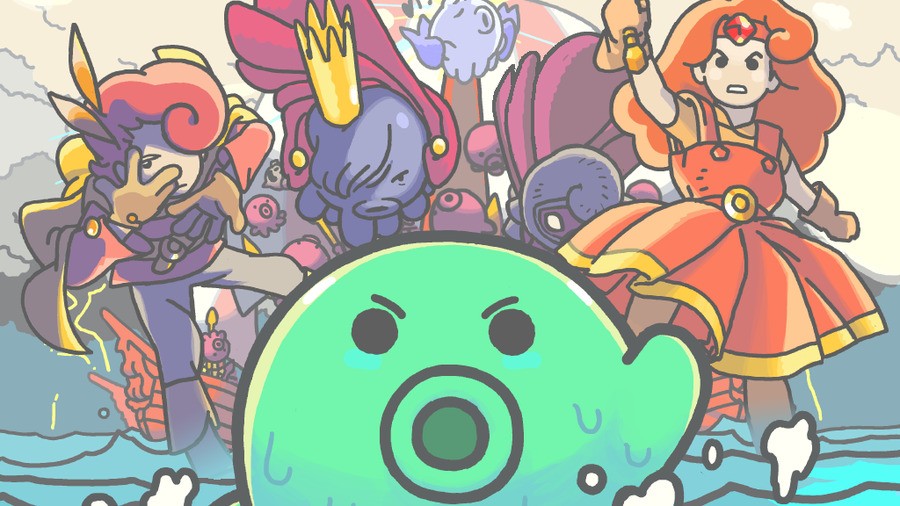
It's a year to the day since Save Me Mr Tako: Definitive Edition arrived on Switch eShop, and with an anniversary update and physical version now available to pre-order, we thought it was a great time to revisit this interview with the game's creator. Enjoy!
In late 2018, controversial indie publisher Nicalis released wunderkind indie developer Christophe Galati’s tribute to the Game Boy Tasukete, Tako-San! / Save Me, Mr. Tako! on Switch to mixed reviews. While some players savored the game’s pea soup-tinted nostalgia, others were frustrated by design choices faithful to an era constrained by primitive technology and still rooted in the arcades.
In the years since the game’s original release, Chris has grown in experience as a developer. But his eagerness to address the concerns of his players evidently caused tension between himself and his former publisher—tension that eventually snapped, resulting in the game being delisted from the eShop last year. Like he promised, however, the game is set to return to the eShop on May 5 in the form of a new Definitive Edition thanks to Limited Run Games, who have also indicated a physical release.
We sat down (figuratively speaking, of course) with Chris to discuss his first indie outing, from its original release to the new Definitive Edition, and to take a sneak peak at his next game. As a gamer who gigs as a translator, this interviewer was also keen to ask a few questions about Tako’s localization and reception in Japan. We hope these questions, too, provide some small insight into an often overlooked but nevertheless important aspect of game development.
Nintendo Life: Save Me, Mr. Tako! isn’t simply a retro-inspired game; it’s specifically a Game Boy-inspired game. What inspired you to design a game that both looks and plays like a lost classic for the handheld?
Christophe Galati: I started Tako’s development back in 2014. At that time, I was still a student at a game design school and missed the feeling of creating my own passion projects like I used to do with RPG Maker. It was the year of the Game Boy’s 25th anniversary, so I took the opportunity to make a tribute to an era that brought me so much growing up. Around that time, I also ate takoyaki for the first time and had a vision of an octopus character with a sword saving people. All these elements led to the first demo of the game, which was a randomly generated auto-runner with the ink and hat mechanics as its basis. The demo went viral and that gave me the motivation to create the full game with the story mode I had envisioned.
The Kirby, Metroid, and Wario series were clear influences, and there was also a fun Shovel Knight Easter egg. What other games did you draw inspiration from?
I feel like I succeeded in my mission to emulate the mood and aesthetic of the Game Boy era since each player tells me that Tako reminds them of a different game. My main inspirations were The Legend of Zelda: Link’s Awakening, Kirby’s Dream Land 2, Metroid II: Return of Samus, Final Fantasy Adventure, and Kaeru no Tame ni Kane wa Naru (“The Frog for Whom the Bell Tolls”), but I really tried to take inspiration from many other things in the world around me. I’m a JRPG player and my goal was to create a big world with colorful and memorable characters—kind of like if Kirby had swallowed Final Fantasy VI—to tell a story that would leave an impression on my players.
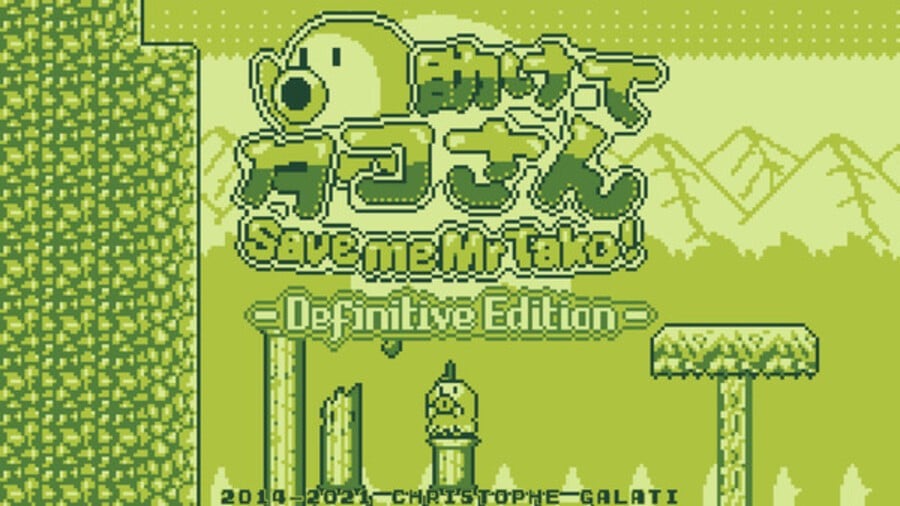
Unusually, the game features a bilingual title in Japanese and English. What significance does the Japanese title hold?
More than just a tribute to the Game Boy, Tako is a love letter to Japanese games, and I try to pay tribute to specific eras of Japanese gaming with each game I make. One of my brothers is a game collector, so I got the chance to grow up surrounded by a lot of Japanese games. I always thought that those games had a different sensibility and way of telling stories that I connected with more. I started learning the language, watched a lot of anime and movies, discovered the culture, and always dreamed of going there. Tako allowed me to realize that dream. Many people were sceptical when I chose the name, but it really allowed me to connect with Japanese players and the creators I wanted to pay tribute to, and it started to open a path for me in Japan.
More than just a tribute to the Game Boy, Tako is a love letter to Japanese games
Besides composing the soundtrack, we understand that you developed the game entirely by yourself. While the game has a charming 8-bit art style, it has an equally charming 8-bit soundtrack. How did you work with the composer Marc-Antoine Archier?
I met Marc-Antoine during a game jam in Mozilla’s office in Paris. He was only one of a few composers there and he worked on many games during the event. He impressed me a lot, especially because even though he was composing in the chiptune style, you could definitely hear his classical music background. We connected and I asked him if he would be interested in making a few tracks for Tako’s demo. He had never composed with the Game Boy’s constraints before but was very curious to try, so he researched everything about it and learned how to use trackers. Even though we didn’t know the game would be so big when we started, he still composed more than 110 tracks for the game and supported me till the end. I’m very proud of his work, which fits the game perfectly, and I can’t wait for everybody to enjoy the soundtrack in the Definitive Edition.
Speaking of which, we often saw you pop up around the Internet helping gamers and respectfully listening to criticism. How did you improve the gameplay for the Definitive Edition in light of such feedback?
When you work on a game on your own for so long, there are things you don’t notice anymore. I never intended to make a hard game, but I fell into the trap of not modernizing the game enough in order to protect the Game Boy’s spirit. Tako was my first game as an indie developer, so there were things I still needed to learn. That’s why I often watched streams, read reviews, and kept my DM open to help my players and show them I understood its issues. Unfortunately, I couldn’t patch the game along the way like I wished I could.
now that I have the opportunity to republish the game, I did my best to make it more accessible... refining core mechanics I was afraid to touch near the end of development
That’s why, now that I have the opportunity to republish the game, I did my best to make it more accessible by rebalancing the enemies, improving the levels, and refining core mechanics I was afraid to touch near the end of development such as the camera and physics. The main issues were the difficulty and the fact that you could easily get lost. I fixed both of those issues by reworking the various difficulty levels and adding one with hearts—you can now change the difficulty mode mid-game as well—and by adding a hint system, a character that reminds you where to go when you go see her, and a new English localization that gives more directions.
I also took the opportunity to add cool new features like the auto-palette option and the juke box. There are a lot of subtle changes to fix things I wish I had noticed before the release. I really hope that with all the new quality of life features, the game can go from a hidden gem to an indie classic, and that more players will be able to enjoy the world I poured my heart into creating.
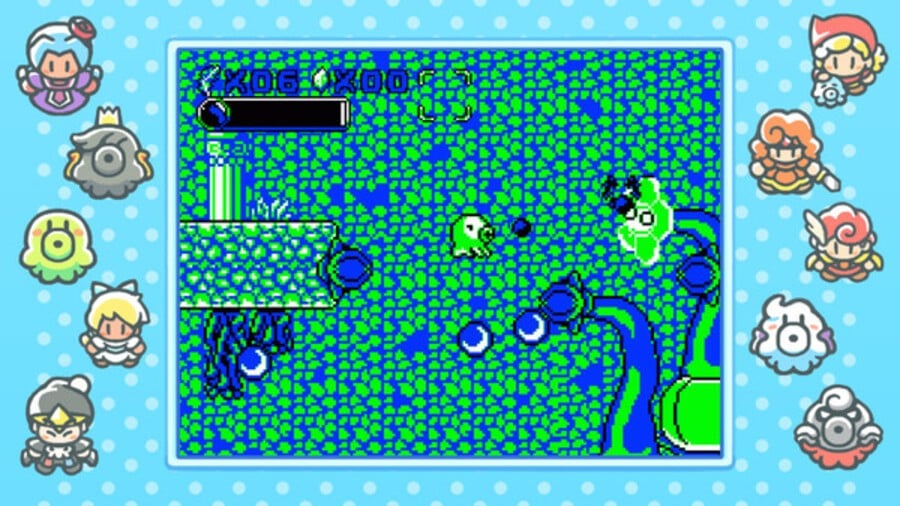
We understand you tackled the English localization for the original release yourself. Considering the adage “Something's always lost in translation”, what challenges did you face localizing the French script for English-speaking gamers?
That’s not exactly true. During development, I translated the game’s text into English myself on-the-fly while writing it in French, but you could definitely tell I’m not a native English speaker since there was a lot of Franglais. It was difficult to do with humor and subtext. When I tried in English, it often sounded totally unnatural. The script is also quite long, so I may have missed some typos, especially since I often worked on the game at night after my day job. When I started working with Nicalis, one of their producers took charge of proofreading my whole English translation and improved many lines. So, even in the original release, it wasn’t 100% my translation.
You mentioned that the Definitive Edition features a new English localization. What compelled you to devote resources to localizing the game in English a second time?
Due to the fact that we parted with Nicalis, I can’t use their IP, which includes assets like their translations. That’s why the game had to be retranslated both into English and Japanese. It was a good opportunity to start afresh and make something better. The original game was criticized for not giving enough directions, leading to many players getting lost. That’s why I improved the French localization and added many lines with a new hint system. For the new English localization, I worked with Jessica Nicholas, who did a very good job making it truer to the game’s mood.
Due to the fact that we parted with Nicalis, I can’t use their IP, which includes assets like their translations. That’s why the game had to be retranslated both into English and Japanese
We recall you expressing pride in the fact that the game was localized in Japanese for the original release. As a fan of Japanese games, did you ever try playing in Japanese?
Growing up, there were many times when I had to play games in Japanese since they weren't released in Europe like Tales of Phantasia and Trials of Mana on the SNES. It was important to me from the get-go to have the game localized in Japanese, and that’s why I was so happy it happened. We tried to emulate the way game text was displayed in retro games, such as without using any kanji since there wasn’t enough memory to display thousands of characters on the Game Boy. I played a bit of Tako in Japanese for testing purposes, but haven’t gone through the whole game in Japanese yet since my level isn’t good enough. Maybe someday.
The game was featured at the 2016 Tokyo Game Show before its original release. How did Japanese gamers respond to playing a 'Japanese' game by a French developer?
Well, right from the start with the Japanese title, I created a mystery with the original demo. I recall many articles saying “the developer lives in France” but not stating that I was French—even French journalists didn’t realize until afterwards that I was French. When I was finally able to visit Japan, it was like a dream come true, and Japanese players connected with the game a lot—they even made a Wikipedia page for the game. Most of the time, it was hard for them to imagine the impact Japanese games had overseas, and they were often surprised when I dropped Japanese game references. I’m glad I could celebrate the Game Boy era with Tako, and by showing appreciation for that culture, I could connect with the land it’s from and its players.
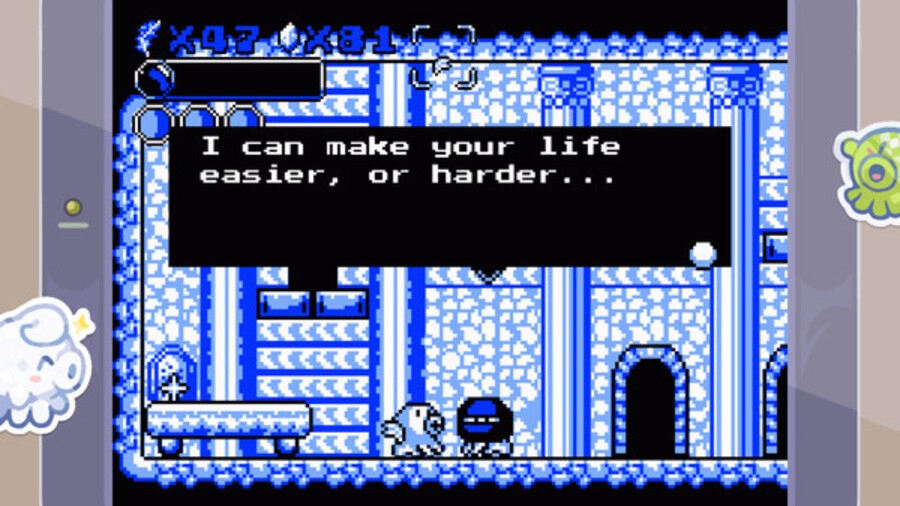
Unfortunately, it doesn’t look like the game will find its way back to the Japanese eShop next month. When can gamers in Japan look forward to playing the Definitive Edition?
The game is currently being re-localized in Japanese, so I can’t announce a release date yet. But, hopefully, it won’t be too long after the release in other regions. When the translation is ready, we can submit it to Nintendo and bring it as a patch to the released version. I can’t wait for the game to come back to Japan and to be able to return there myself!
You recently announced in a blog post that Limited Run Games will be publishing the Definitive Edition on Switch. The following day, Limited Run Games also announced on Twitter that the game will finally be getting a physical release as well. How did the game come to enjoy a second chance at life on Switch after being delisted from the eShop last year?
I met with Douglas Bogart from Limited Run Games a while back when I was showcasing Tako at various game events, including Tokyo Game Show, BitSummit, and PAX West. I always dreamed of getting a physical version of my game, but that’s something that never happened. We kept in touch and they helped me out with legal advice in order to get the exploitation rights back. That’s why we decided to work together to bring it back to consoles, while I’ll be handling the PC versions myself moving forward. I’m excited to see the physical version we’ll be doing after the game is back on digital stores!
Understandably, a number of gamers who previously purchased the game have expressed frustration with the news of the Definitive Edition’s upcoming release, especially considering they will have to pay full price in order to enjoy its new features. Would you like to share anything with gamers who have already purchased the original release and feel like they’re being taken advantage of with the Definitive Edition?
I understand the frustration as I also wish things could have gone differently. Again, Tako was my first game as an indie developer and I didn’t notice its issues before the release. I worked on patching it along the way while listening to players’ feedback, but I was unable to apply any patches or updates to it for two years. Because the game would have remained the same as it was on release, I did what I could to get the rights back. Since it was delisted and not transferred, I can’t legally use the original version anymore. So, the only way to finally improve it was to make a new definitive version. We really put the work in to make it worth a new purchase. I know it’s frustrating to have to repurchase it—I wish I didn’t have to go through the release process again—but it was the only way the game could finally be what I wanted it to be in the first place and for me to finally be at peace with it and ready to move forward with my next projects.
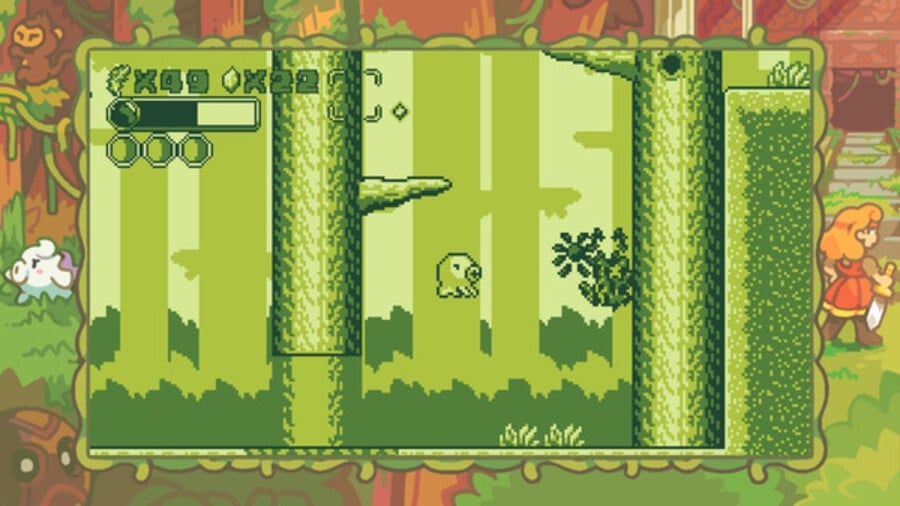
Your next game Himitsu Project appears to be a tribute to the Game Boy Advance era, much like your first game was a tribute to the Game Boy era. What are your goals for the game and how has its development been coming along?
For me, Tako was always the first step in my goal to pay tribute to the eras of gaming and JRPGs that inspired me growing up. That’s why I moved on to the Game Boy Advance for Himitsu Project, which is an Action RPG taking inspiration from many games including Golden Sun and Illusion of Gaia. The goal of the game is to talk about traumas and secrets, and how they turn into monsters that are used by people in power to control the world.
I started to build a team around the game with Valentin Seiche handling the character design and Pixel Boy handling the graphics—both of them also worked on the new key art and border images for the Definitive Edition—while I’m currently handling design, story, and programming. We are still making a vertical slice demo of the game in order to get funding for the years of development ahead. I paused the development for a few months in order to work on the Definitive Edition, but I can’t wait to start working on Himitsu Project again!
It looks like you began development on Himitsu Project while living in Japan. What brought you to Japan and how did that experience influence the game?
I was kind of burned out after years of working on Tako. Even though I already had ideas for the next game, it took me time to recover. During this time, I stumbled across a documentary about the Villa Medici in Rome, which introduced me to the concept of artist residencies. I thought it would be great if we could have this kind of program for game developers, too—inspiring places fully dedicated to creation. Soon after, I heard about the Villa Kujoyama, a French artist residency in Kyoto. Even though I was too young for the program and they did not list games in their eligible artistic fields, I applied anyway, got through the whole process, and was selected! I got the privilege to spend five months in Kyoto to start working on my new game Himitsu Project, surrounded by artists from very different fields who gave me a new outlook on creativity. I had a few goals in mind, including making all the pre-production documentation (story, character, and game design documents), starting the prototype, and connecting again with the Japanese indie scene. I did the most I could during my time in Japan: I got back in shape, met amazing people, and got many ideas for the game. It was an amazing experience and I couldn’t have dreamed of better conditions to start working on Himitsu Project. I also hope it opened the doors to other residencies for game developers.
Finally, whether it’s this year or a decade from now, whenever Tako-san makes his inevitable appearance in Super Smash Bros., what do you imagine his final smash will look like?
Tako in Smash would be awesome! With his ink power and various hats, he can have a very diverse move set. I guess his final smash would be the way he fights the final boss. (I don’t want to spoil it, but get ready for a very cool battle!)
Our thanks to Cristophe for his time. Save Me, Mr. Tako! will be out on Switch (again) on 5th May 2021. You can read our review of the original non-Definitive Edition.





Comments 30
Great interview, it’s always interesting to get an insight into the indie dev process. Also, f**k Nicalis.
I still have my old copy, along with physical versions of Ittle Dew 2+ and Cave Story+ by Nicalis. I wish there was a way to upgrade...
Will nintendo life be doing a new review or some sort of follow up with all changes done to the game?
Nicalis burned me with ittle dew 2 and mr tako, so I’ll never support anything they put out again. But if the dev worked this hard on fixing the game and what was broken with it I will keep an eye out for a sale and pick it up again.
I did finish the original version, but it was such a painful experience mainly due to bugs and some odd design decisions. It was even worse finding out that Nicalis was the roadblock to getting patches and was a big factor in never getting anything from them again.
I was very heartened to find out that this new version fixes literally every problem I had with it! Definitely getting this again on Wednesday to show support.
I gained a lot of insight and respect for this dev. It seems he had a hard road but he's all the better for it--That's life and I'm happy for him. He also dropped some very cool references as far as inspiration such as Tales of Phantasia and Trials of Mana for Mr. Tako, as well as references for his new project in the form of Golden Sun and Illusion of Gaia. These are all of my jams so I'm looking forward to this new project of his. I have Mr. Tako on my wishlist as of now.
I hope this gets a follow up review, I hadn't much interest in the original to be honest but this interview has interested me. Wishing him the best in his split with the publishers!
Cool interview. Unfortunate to hear about the Nicalis developments. I've been a fan of some of their affiliated projects like Cave Story, NightSky, The Binding of Isaac. Hopefully they get it together.
Very interesting, and great interview! Has anyone here played this game and have some thoughts? Nicalis is awesome and would love to support, especially if a physical is coming!
@Slowdive What exactly is wrong with Limited Run?
They put out so many physical releases that simply would not exist without them so they aren't taking away anything from anyone else. They even offer a 4 week window for pre-orders now, far better than they used to.
Even the shipping is fair.
Don't tell me all these Nicalis issues are why we haven't gotten The Legend of Bum-Bo on the switch.
This game was ok, I was excited for a Kirby's Adventure tribute but it was not that well polished and some of the level design was meh.
@Slowdive Price I get but you pay a premium for something like this where it's not from your own country. Same if I purchased a game or CD from Japan for example.
I don't agree about FOMO being a large factor, the vast majority of the games they put out would never get a physical release in the first place since doing so is quite costly and simply not feasible. It's this or nothing.
Anything in a limited or physical capacity is going to run out and be hard to track down at some point, that stretches far back be it books, vinyl, games or films. As long as it is available in some other form where you can support the creator then I don't see the problem though understand the irritation.
When it isn't and the creator gets nothing (Ripper era JP albums for example) then it becomes an issue.
Will forever hate and never support any game by Nicalis.
Still hoping Binding of Isaac gets updated on Switch but not holding my breath.
@wuntyme8 @ItsATM You two should do some google searches on Nicalis and see why people hate them so much...
@getyourak
All based on two things. 1.) A sole Kotaku article. 2.) Some sort of naive outlook on the world where the company that publishes Code of Princess Ex wouldn't patently house creeps.
@robr I think you're better off on 8chan
@ItsATM really liked Save me Mr Tako. It's more than a platformer for me. This game have a really good story, characters, plot twist that we rarely see in a platformer game (Mario, Kirby, etc), side quest and cities to explore. Also there is a metroidvania side that with new skill you can return to older level and find some secrets. The game is quite long for a platformer between 15-30 hours.
@getyourak I couldn't find anything, can you give me some sources.
日本でも、再びの発売があるのですね!☺️
このインタビューを読んでたら買いたくなりました💓
It will be released again in Japan! ☺️
After reading this interview, I wanted to buy it 💓
@AG_Awesome
Chris did a thorough breakdown of the changes he made in a post on his Patreon blog—definitely worth a read. I wish I could review the definitive edition in light of the original release myself, but it doesn’t sound like it will be coming to Japan where I live for a while longer.
@A_WINNER_IS_Mii thank you! I will check that out.
It looks like the game is now available to purchase digitally!
https://www.nintendo.co.uk/Games/Nintendo-Switch-download-software/Save-me-Mr-Tako-Definitive-Edition-1962948.html#Overview
https://www.nintendo.com/games/detail/save-me-mr-tako-definitive-edition-switch/
I plan to get LRG's physical version, but I know that will take time and it will help to get this digitally to support the developer.
I was gonna want to make a beat em up with Nicalis. So glad I read this interview first.
@getyourak
Surely I’ve bruised up far too many Neo-Nazis for an 8chan invitation? 😇
@Froid12 Appreciate this response so much, and thanks for selling me on it!
@ItsATM my pleasure. 😁
Any chance of a new review or a feature article on the changes/updates?
One more time, say it with me now, all together!
F**** NICALIS!
Good olde Nicalis. Nobody harasses their development partners like Nicalis. Nobody! Wait...what?
https://kotaku.com/inside-the-ghosting-racism-and-exploitation-at-game-p-1838068522
Physical plus soundtrack for me. I’ll be going in deaf and blind too (I’ve only seen a handful of screenshots and nothing else).
And I’m always happy to see indie (especially solo) developers having their passion projects receive such treatment; another such example being Bertil Hörberg’s Mechstermination Force.
Glad to have this interview out especially because of Nicalis and their really good Cave Story port that I bought and played supporting Nicalis in the process. Shameful company >
Tap here to load 30 comments
Leave A Comment
Hold on there, you need to login to post a comment...